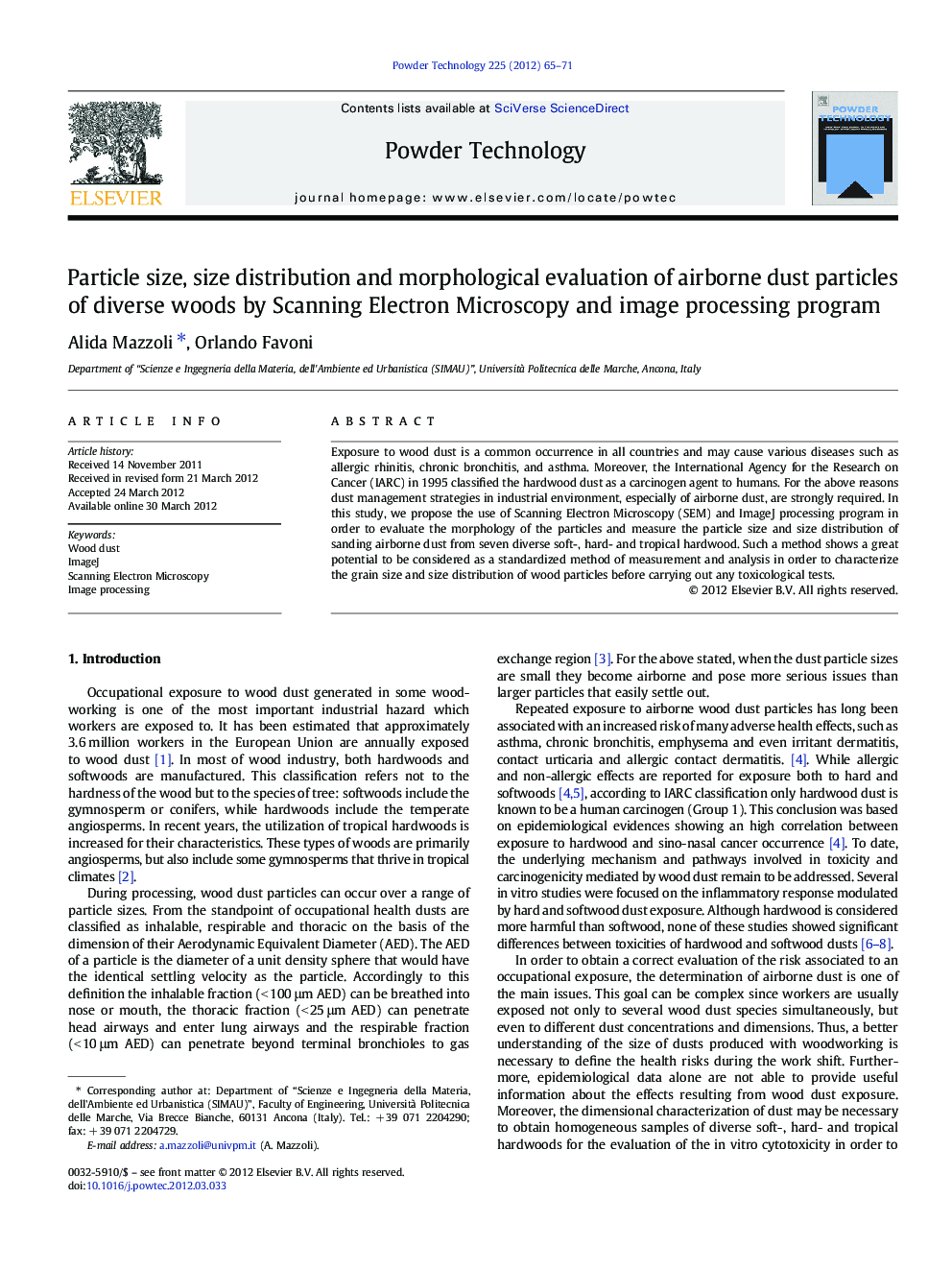| Article ID | Journal | Published Year | Pages | File Type |
|---|---|---|---|---|
| 237127 | Powder Technology | 2012 | 7 Pages |
Exposure to wood dust is a common occurrence in all countries and may cause various diseases such as allergic rhinitis, chronic bronchitis, and asthma. Moreover, the International Agency for the Research on Cancer (IARC) in 1995 classified the hardwood dust as a carcinogen agent to humans. For the above reasons dust management strategies in industrial environment, especially of airborne dust, are strongly required. In this study, we propose the use of Scanning Electron Microscopy (SEM) and ImageJ processing program in order to evaluate the morphology of the particles and measure the particle size and size distribution of sanding airborne dust from seven diverse soft-, hard- and tropical hardwood. Such a method shows a great potential to be considered as a standardized method of measurement and analysis in order to characterize the grain size and size distribution of wood particles before carrying out any toxicological tests.
Graphical abstractIn this study, we propose the use of Scanning Electron Microscopy (SEM) and ImageJ processing program in order to evaluate the morphology of the particles and measure the particle size and size distribution of sanding airborne dust from seven diverse soft-, hard- and tropical hardwood.Figure optionsDownload full-size imageDownload as PowerPoint slideHighlights► We evaluate the morphology, particle size and size distribution of sanding wood dust. ► We use Scanning Electron Microscopy (SEM) and ImageJ processing program. ► The proposed method shows a potential as a standardized method of measurement. ► The minimal Feret’s diameter was chosen for the visualization of the results. ► We found that sanding treatment results in the emission of very small wood particles.
